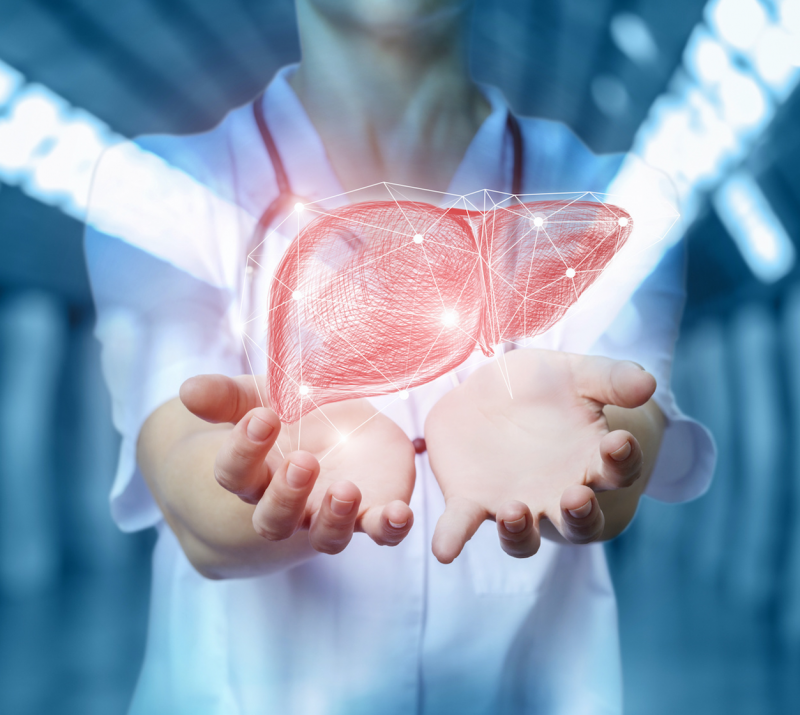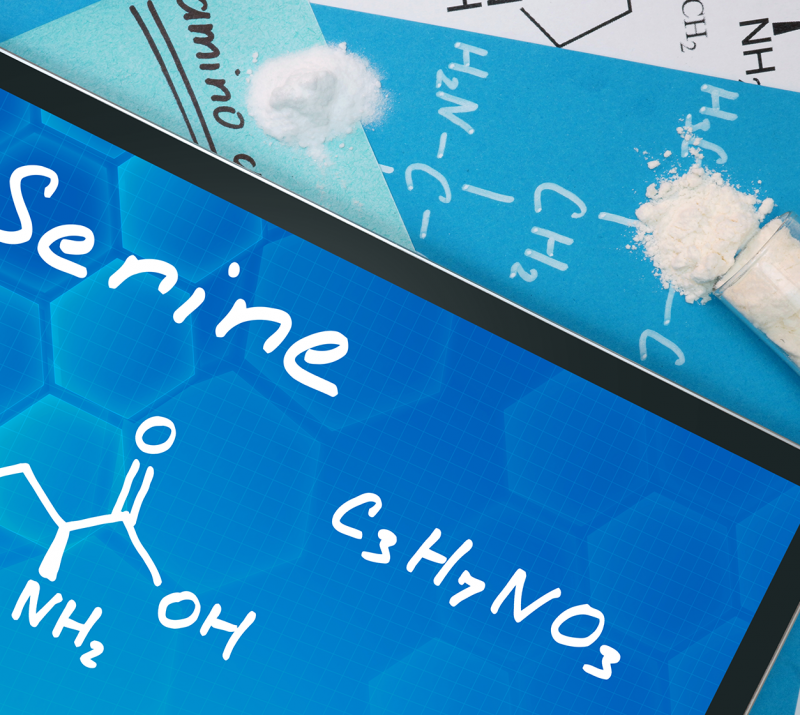
PROJECT OVERVIEW
Kinetics of Metabolic Activators
https://clinicaltrials.gov/ct2/show/NCT03838822
The prevalence of non‐alcoholic fatty liver disease (NAFLD) continues to increase dramatically, and there is no approved medication for its treatment. Recently, we predicted the underlying molecular mechanisms involved in the progression of NAFLD using network analysis and identified metabolic cofactors that might be beneficial as supplements to decrease human liver fat. Here, we first assessed the tolerability of the combined metabolic cofactors including l‐serine, N‐acetyl‐l‐cysteine (NAC), nicotinamide riboside (NR), and l‐carnitine by performing a 7‐day rat toxicology study. Second, we performed a human calibration study by supplementing combined metabolic cofactors and a control study to study the kinetics of these metabolites in the plasma of healthy subjects with and without supplementation. We measured clinical parameters and observed no immediate side effects. Next, we generated plasma metabolomics and inflammatory protein markers data to reveal the acute changes associated with the supplementation of the metabolic cofactors. We also integrated metabolomics data using personalized genome‐scale metabolic modeling and observed that such supplementation significantly affects the global human lipid, amino acid, and antioxidant metabolism. Finally, we predicted blood concentrations of these compounds during daily long‐term supplementation by generating an ordinary differential equation model and liver concentrations of serine by generating a pharmacokinetic model and finally adjusted the doses of individual metabolic cofactors for future human clinical trials.
PROJECT DETAILS
- Category NAFLD

| Tracking Information | |
|---|---|
| First Submitted Date ICMJE | February 4, 2019 |
| First Posted Date ICMJE | February 12, 2019 |
| Last Update Posted Date | February 15, 2019 |
| Actual Study Start Date ICMJE | September 1, 2018 |
| Actual Primary Completion Date | November 1, 2018 (Final data collection date for primary outcome measure) |
| Current Primary Outcome Measures ICMJE (submitted: February 12, 2019) |
Changes of plasma levels of nicotinamide riboside measured by mass spectrometry [ Time Frame: Twenty-four hours after administration ]Plasma levels of nicotinamide riboside by UPLCMSMS at 8 time points during 24h after administrationChanges of plasma levels of L-carnitine measured by mass spectrometry [ Time Frame: Twenty-four hours after administration ]Plasma levels of L-carnitine (nM) measured by UPLCMSMS at 8 time points during 24h after administrationChanges of plasma levels of L-serine measured by mass spectrometry [ Time Frame: Twenty-four hours after administration ]Plasma levels of L-serine (nM) measured by UPLCMSMS at 8 times points during 24h after administrationChanges of plasma levels of N-acetylcystein measured by mass spectrometry [ Time Frame: Twenty-four hours after administration ]Plasma levels of N-acetylcystein (nM) measured by UPLCMSMS at 8 times points during 24h after administration |
| Original Primary Outcome Measures ICMJE (submitted: February 11, 2019) |
Changes of plasma levels of nicotinamide riboside measured by mass spectrometry [ Time Frame: Twenty-four hours after administration ]Plasma levels of nicotinamid riboside by UPLCMSMS at 8 time points during 24h after administrationChanges of plasma levels of L-carnitine measured by mass spectrometry [ Time Frame: Twenty-four hours after administration ]Plasma levels of L-carnitin (nM) measured by UPLCMSMS at 8 time points during 24h after administrationChanges of plasma levels of L-serine measured by mass spectrometry [ Time Frame: Twenty-four hours after administration ]Plasma levels of L-serine (nM) measured by UPLCMSMS at 8 times points during 24h after administrationChanges of plasma levels of N-acetylcystein measured by mass spectrometry [ Time Frame: Twenty-four hours after administration ]Plasma levels of N-cetylcystein (nM) measured by UPLCMSMS at 8 times points during 24h after administration |
| Change History | Complete list of historical versions of study NCT03838822 on ClinicalTrials.gov Archive Site |
| Current Secondary Outcome Measures ICMJE (submitted: February 11, 2019) |
Changes in the plasma level of metabolites associated with the supplementation of metabolic co-factors. [ Time Frame: Twenty-four hours after administration of combined cofactors ]Untargeted metabolomic analysis using mass spectrometry. (Untargeted = not pre-specified in terms of outcome)Changes in the plasma level of inflammation-related proteins associated with the supplementation of metabolic co-factors. [ Time Frame: Twenty-four hours after administration of combined cofactors ]Changes in the plasma level of inflammation related proteins associated with the supplementation of metabolic co-factors. |
| Original Secondary Outcome Measures ICMJE | Same as current |
| Current Other Pre-specified Outcome Measures | Not Provided |
| Original Other Pre-specified Outcome Measures | Not Provided |
| Descriptive Information | |
| Brief Title ICMJE | Kinetics of Metabolic Cofactors in NAFLD |
| Official Title ICMJE | Kinetics of Metabolic Cofactors After Oral Supplementation in Healthy Subjects |
| Brief Summary | There is a strong correlation between major adverse health consequences of obesity and development of non-alcoholic fatty liver disease (NAFLD). NAFLD is characterized by abnormal hepatic accumulation of triglycerides and other lipids. It has become a worldwide health problem that accelerates cirrhosis, type 2 diabetes mellitus (T2DM), and especially premature cardiovascular morbidity and mortality.The plasma level of glutathione (GSH) is typically depleted in individuals with metabolism related disorders. However, cellular GSH levels cannot be increased by supplementing GSH and it must be synthesized within the liver either de novo or by salvation pathway. The level of GSH is not enough to maintain and regulate the thiol redox status of the liver in subjects with high hepatic steatosis at fasting stage due to the depletion of glycine. Glycine can be synthesized via the interconversion of serine. It has been shown that the serine synthesis is downregulated in patients with NAFLD and supplementation of serine has attenuated alcoholic fatty liver by enhancing homocysteine metabolism in mice and rats. Depleted liver glutathione is also restored by the administration of N-acetylcystein as in acetaminophen poising. L-carnitine and nicotinamide that both stimulate the transfer of fatty acids from cytosol to mitochondria have been identified as two additional cofactors that are depleted in patients with NAFLD.In this study, the kinetics in blood of pivotal metabolic cofactors, serine, L-carnitine, N-acetylcystein and nicotinamide after single and simultaneous dietary supplementation, are measured. |
| Detailed Description | In 10 healthy subjects with BMI <30 kg/m2 the plasma concentrations of 4 natural compounds (nicotinamide riboside, L-carnitine, L-serine and N-acetylcystein) are measured by ultra-performance liquid chromatography-tandem mass spectrometry (UPLCMSMS) after individual and combined administration, on five consecutive days and at every hour during 9 hours after administration. The study will start at 8:00 every morning and at each time point, blood samples will be collected.The taste and any potential sensing of the co-factors such as vertigo, nausea, bowel movement will be recorded.Each participant will receive one oral dose of Day 1: 1 g nicotinamide riboside; Day 2: 3 g L-carnitine; Day 3: 5 g N-acetylcystein; Day 4: 20 g L-serine; Day 5: combined 1 g nicotinamide riboside, 3 g L-carnitine, 5 g N-acetylcystein, and 20 g L-serineIn addition, untargeted metabolomics analysis as well as O-link proteomics analysis we be performed to study effect of the administered cofactors. |
| Study Type ICMJE | Interventional |
| Study Phase ICMJE | Early Phase 1 |
| Study Design ICMJE | Allocation: N/A Intervention Model: Single Group Assignment Masking: None (Open Label) Primary Purpose: Treatment |
| Condition ICMJE | Healthy |
| Intervention ICMJE | Dietary Supplement: CofactorsOral administration of 1g nicotinamide riboside, 3g L-carnitine, 20g serine and 5g N-acetylcystein, first as single compounds, then combined, on 5 days |
| Study Arms ICMJE | Experimental: InterventionOral administration of cofactors, 1g nicotinamide riboside, 3g L-carnitine, 20g serine and 5g N-acetylcystein, first as single compounds, then combined, on 5 daysIntervention: Dietary Supplement: Cofactors |
| Publications * | Not Provided |
| Recruitment Information | |
| Recruitment Status ICMJE | Completed |
| Actual Enrollment ICMJE (submitted: February 11, 2019) |
10 |
| Original Actual Enrollment ICMJE | Same as current |
| Actual Study Completion Date ICMJE | December 1, 2018 |
| Actual Primary Completion Date | November 1, 2018 (Final data collection date for primary outcome measure) |
| Eligibility Criteria ICMJE | Inclusion Criteria:Healthy without any medication, no smokers, no obesityExclusion Criteria:Any known disease, obesity |
| Sex/Gender ICMJE | Sexes Eligible for Study:Male |
| Ages ICMJE | 18 Years to 40 Years (Adult) |
| Accepts Healthy Volunteers ICMJE | Yes |
| Contacts ICMJE | Contact information is only displayed when the study is recruiting subjects |
| Listed Location Countries ICMJE | Sweden |
| Removed Location Countries | |
| Administrative Information | |
| NCT Number ICMJE | NCT03838822 |
| Other Study ID Numbers ICMJE | Cofactor Calibration 1.0 |
| Has Data Monitoring Committee | No |
| U.S. FDA-regulated Product | Studies a U.S. FDA-regulated Drug Product:NoStudies a U.S. FDA-regulated Device Product:No |
| IPD Sharing Statement ICMJE | Plan to Share IPD:No |
| Responsible Party | Hanns-Ulrich Marschall, Sahlgrenska University Hospital, Sweden |
| Study Sponsor ICMJE | Sahlgrenska University Hospital, Sweden |
| Collaborators ICMJE | Karolinska InstitutetChalmers University of Technology |
| Investigators ICMJE | Principal Investigator:Hanns-Ulrich Marschall, ProfSahlgrenska University Hospital, Sweden |
| PRS Account | Sahlgrenska University Hospital, Sweden |
| Verification Date | February 2019 |

